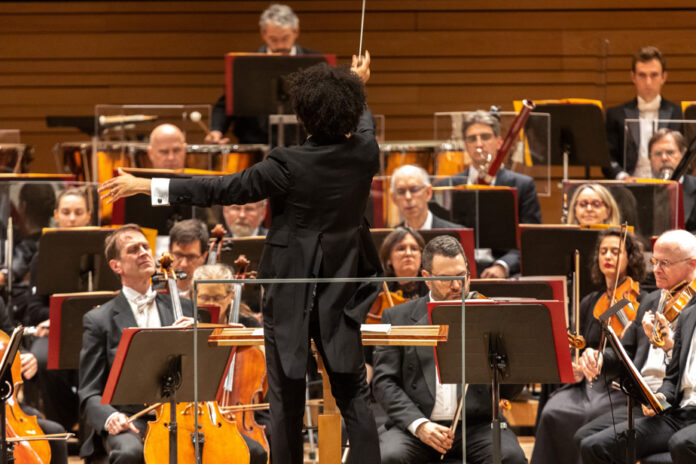The 89th season of the Orchester symphonique de Montréal ended as it began, with Mahler. After conducting the immense Second Symphony in September, Rafael Payare brought his first year as Music Director to a remarkable close with the no less monumental Third Symphony by the Bohemian composer.
Conducting Mahler is obviously a challenge in terms of orchestral set-up, with a hundred musicians on stage and an arm’s length score. But the music director of the OSM goes far, far beyond the small “kitchen”. He turns Symphony No. 3 in D minor into a vast tableau in which hundreds of characters move. One thinks of these world films like Intolerance by Griffith or War and Peace by Bondarchuk.
This is particularly the case in the first movement, not far from being the longest symphonic movement in the entire repertoire. One could reproach Mahler for having inserted too many secondary characters, for having fallen into a certain puffiness.
We are struck as soon as the horns enter, perhaps too legato (Mahler puts accents on each note), but very “powerful, determined”, as the composer asks. The pianissimo bass drum by Serge Desgagnés then subtly sets up the climate of suspense that was to follow. Singing and storytelling: Rafael Payare’s OSM had already, in a few bars, announced its colors for the next 90 minutes.
The second and third movements are perhaps lighter (the previous one is supposed to evoke telluric forces whereas these respectively represent plants and animals), but they follow somewhat the same recipe: succession of many themes and motifs often strongly contrasting.
Entering at the beginning of the second movement, the voices would then have their moment. American mezzo-soprano Michelle DeYoung, who recorded Mahler with Boulez, Haitink and company, was overwhelming in the fourth movement, the “O Mensch!” Gib buy! (O Man, Beware!), from Nietzsche’s Thus Spoke Zarathustra. The vibrato has gotten quite wide over time, but that’s hardly a problem in this post-Wagnerian aesthetic.
The two choirs, the women of the OSM Choir and the Petits Chanteurs du Mont-Royal, seated on the balconies, performed flawlessly in the fifth movement, taken from the collection of the Child’s Wonderful Cor.
But it is probably in the last movement, chained as it should be without interruption, that the emotion reached its zenith. For Mahler, it is here that “everything is resolved in peace and in Being”, as he wrote to a loved one. Payare understood this well, he who directs the beginning of this adagio in a kind of blissful resignation, letting the music unfold naturally until the vibrant climax where you had to have a heart of stone not to feel the hairs on your arms stand up. of contentment.
How not to wait impatiently for Symphonies No 1 and 7 by the same composer next year?
At the start of the concert, CEO Madeleine Careau highlighted the retirement of oboist Theodore Baskin and his cellist wife Karen Baskin, who were with the OSM for 43 and 34 years respectively.
The concert, first given on Wednesday evening, will be repeated this Saturday afternoon at 2:30 p.m.















